ZINC PLATING CHEMICALS
ACID/ALKALINE ZINC PLATING ADDITIVES
The chemical components of this category are widely used for galvanizing fasteners, metal hardware and component parts. Products that have passed galvanizing process have high resistance to corrosion, mechanical stress and external influences. Galvanizing allows further welding of products, that is convenient for complex structures mounting. To improve the corrosion resistance zinc coating is phosphatized and chromatized. Chromatizing improves decorative appearance of the coating.
Chemicals for electroplating. Electrolytic galvanizing method
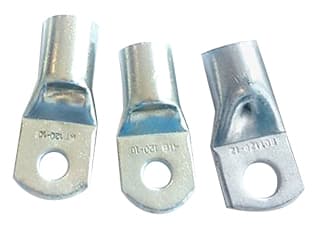 With electrolytic method galvanizing of the products surfaces is carried out in electrolyte solutions by electric current. Main components of these electrolytes are salts of zinc. The essence of electrode processes in electrolytic galvanizing is in the oxidation (anode) reaction and recovery (cathode), followed by a flow of electrons through the external circuit and zinc ions movement in the electrolyte from the anode to the cathode.
With electrolytic method galvanizing of the products surfaces is carried out in electrolyte solutions by electric current. Main components of these electrolytes are salts of zinc. The essence of electrode processes in electrolytic galvanizing is in the oxidation (anode) reaction and recovery (cathode), followed by a flow of electrons through the external circuit and zinc ions movement in the electrolyte from the anode to the cathode.
Areas of use
Zinc electroplating is carried out to give the steel certain properties: corrosion-resistant, protective, decorative, anti-friction (to give hardness, wear resistance).
- Transport
- Building
- Industrial
- Repair of industrial plants
- Hydraulic structures
- Urban objects
- Oil and gas industry
Chemicals for alkaline zinc-nickel plating ZN-202 series
Chemical composition: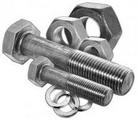
Zinc ions: 7-12 g/l
Sodium Hydroxide: 100-140 g/l
Additive ZN-202MU: 90 ml/l
Additive ZN-202A: 18 ml/l
ZN-202B Additive: 15 ml/l
Additive ZN-202N: 30 ml/l
Galvanizing is carried out at temperature of 28±2 °C at cathode current density 1.5-3.5 A/dm2 and anode current density of 15 A/dm2.
Specification: Technology refers to clean regarding the level of toxicity and does not harm the environment. Coating is uniform, bright, have high corrosion and heat resistance.The nickel content of 12-15%. Chemical component has good dispersion properties and enables galvanizing at high current density.
Chemicals for acid zinc-nickel plating ZN-211 series
Chemical composition: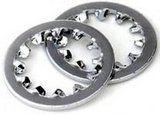
Zinc chloride: 70 g/l
Nickel chloride: 140 g/l
Ammonium chloride 200 g/l
ZN 211A-active additive 60 ml/liter
ZN-211B brightening additive 30 ml/liter
ZN-211D reagent: 50 ml/l
Galvanizing is carried out at temperature of 32-36 °C cathodic current density at 2-5 A/dm2, anode (nickel-zinc) current density of 1: 2.5-3 A/dm2and 5.0 ± 0.2 PH.
Specification: Technology refers to clean regarding the level of toxicity and does not harm the environment.
Coating is uniform, smooth, bright white color, has high corrosion resistance and thermal resistance. The nickel content of 8-12%.
The chemical component is easy to operate and provides high speed electroplating of zinc and the possibility of galvanizing at high current density. The electrolyte is ideal for galvanizing high-dip steel, cast iron products in galvanic drums and suspensions.
Brightening agent for acid zinc plating ZN-28
| Chemical composition | Galvanizing in suspension | Galvanizing in drums |
|---|---|---|
| Zinc chloride | 60-80 g/liter | 40-60 g/liter |
| Potassium chloride (sodium) | 180-220 g/liter | 180-220 g/liter |
| Boric acid | 25-35 g/l | 25-35 g/l |
| Brightening agent ZN-28 | 0.5-1.0 ml/l | 0.5-1.0 ml/l |
| Softening agent ZN-30 | 20 ml/l | 20 ml/l |
| Galvanizing is carried out at temperature of of 15-50°C at cathode current density 0.5-3.5 A/dm2 (suspensions), 0.1-1.0 A/dm2 (drum) and PH 4.5-5.5. | ||
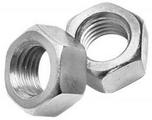 Specification: The coating is resistant stable and of bright white color. Brightening additive ideal for galvanizing products in galvanic drums and suspensions. The application component does not cause difficulties in waste water treatment.
Specification: The coating is resistant stable and of bright white color. Brightening additive ideal for galvanizing products in galvanic drums and suspensions. The application component does not cause difficulties in waste water treatment.
Adjustment of the solution:
Brightening agent ZN-28: 150-200 ml / KAH
Softening agent ZN-30: as required.
Brightening agent for alkaline zinc plating ZN-H100 series
Chemical composition:
Zinc oxide: 7-15 g/l
Sodium hydroxide: 70-150 g/l
ZN-H100A additive: 4-6 ml/l
ZN-H100B brightening additive: 4-6 ml/l
Adjustment of the solution:
ZN-H100A additive: 100 ml / KAH
ZN-H100B brightening agent: 100 ml / KAH
Specification: coating is uniform, bright and glossy. Chemical component has good dispersion properties, stable, easy to use, enables galvanizing at high current density.The absence of cyanide does not require additional effort in wastewater treatment.
Galvanizing is carried out at temperature of 20-40°C at cathode current density 0.5-6.0 A/dm2.
Cyanide brightening agent for zinc plating ZN-22 series
Chemical composition: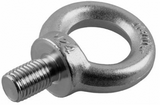
ZnO: 10-20 g/l
Sodium hydroxide: 70-100 g/l
Sodium cyanide: 10-50 g/l
Brightening agent ZN-22: 4-6 ml/l
Adjustment of the solution:
Brightening agent ZN-22: 100-150 ml / KAH
Specification: coating is uniform, bright. Brightening agent is simple and economical to operate, ideal for galvanizing products in galvanic drums and suspensions. Galvanizing is carried out at temperature of 20-40°C at cathode current density 0.5-6.0 A/dm2.
Technology and methods of galvanizing
Galvanizing is the main way to protect the base metal of hardware from corrosion. Usually this method is used to protect various grades of carbon and alloy steels. Galvanizing in hardware production is used for corrosion protection of articles made of wire and various fasteners. Zinc coating significantly extends the use of the product and reduces costs for its maintenance and replacement. The principle of products protection based on the zinc coating is determined by the difference in the electrochemical potentials of Zn and Fe. The zinc coating in wet environment acts as anode taking care of all harmful processes of oxidation reactions and thus protecting the base metal products. Inexpensive galvanizing process and a high degree of anode protection of the base metal made it the most popular technology for corrosion protection in the manufacture of metal products.
Technology of electrolytic galvanizing is a chemical process - electrolysis.
In the bath with electrolyte there are the two metals, steel products and pure zinc. Electric current is supplied to them. Steel products are loaded into the quick-btn-cont, and current is supplied to them through special electrodes. Zinc may be used in form of plates or balls loaded into the special mesh section or other form. Current is also supplied to zink. During electrolysis, the zinc (anode) is dissolved, and its ions are deposited on the surface of steel products, forming a plating of 4 to 20 microns thickness. Anodic dissolution of the zinc electrode occurs as a result of electric current passing through the electrolyte with cathode density of from 1 to 5 A / dm2. With this technology uniform, brightening zinc coating is obtained.
Methods of galvanizing
Currently in metal hardware production there are three ways of products protection against corrosion: cyanide, alkaline and acid galvanizing.
Cyanide method
Cyanide method is highly toxic due to the presence in the electrolyte of sodium cyanide, sodium hydroxide and zinc oxide. By varying the percentage of components different properties of the electrolyte can occur. Positive aspects of cyanide electrolytes are: plating lines high performance, good hiding power, can treat parts of complex shape, durability and ease of electrolyte adjustments. The disadvantages of this galvanizing technology should include a high degree of environmental hazard and hydrogen embrittlement derived from carbon steel. Hydrogen embrittlement is the most significant drawback, especially for high-strength fasteners, greatly reducing their static and fatigue strength.
Alkaline method
An alternative to cyanide electrolyte may be alkaline electrolytes which contain 1-2 grams of zinc oxide and 10-20 g of sodium hydroxide in 1 liter of solution. Such electrolytes are less hazardous to the environment than the cyanide, but they are not without drawbacks. Alkaline electrolytes is recommended only for steel; galvanizing process is stopped while electrolyte heating is more than + 30 ° C. Just as in the cyanide galvanizing method there is a significant hydrogen absorption of workpieces that prevents the use of this method of galvanizing for corrosion protection of high-strength fasteners. When using the modern technology of alkaline galvanizing coatings are highly decorative. The use of different passivators allows to give any color - from white with a bluish tinge to dark olive-green and even black.
Acid method
The most popular technology is the technology of the galvanizing in weakly acidic electrolytes. This technology has high coverability and improved appearance of zinc coating. This method further reduces the tendency of zinked products of carbon and alloy steels to hydrogen embrittlement and allows galvanize parts of complex configurations made of both steel and cast iron. In modern hardware production, this method of applying a protective coating is the most common among manufacturers of fasteners. Galvanizing in weakly acidic electrolytes allows you to get the most decorative effect. Products with a protective coating of zinc, obtained by weak acid galvanizing technology, have high gloss, various colors and high corrosion protection.
Surface preparation
All galvanizing technologies require high quality surface preparation of workpieces. Before the process of galvanizing it is necessary to clean the surface of the scale, technological lubricant residues, corrosion products (rust). After applying a zinc coating for greater stability and resistance the coating is subjected to lightening (pickling - etching in a weak solution of nitric acid) and passivation. Passivation of the zinc coating gives not only the additional corrosion resistance but also improves decorative appearance, adding extra shine or coloring coating in different colors. Most passivating solutions containing ions of Cr 6+ as the most effective and cheapest way to protect the zinc coating. However, since 2007, the EU banned the use of Cr 6+, and manufacturers have switched to less hazardous passivators based on Cr 3+ and new types of efficient chrome-free protective coatings.
